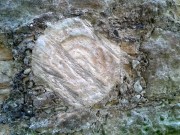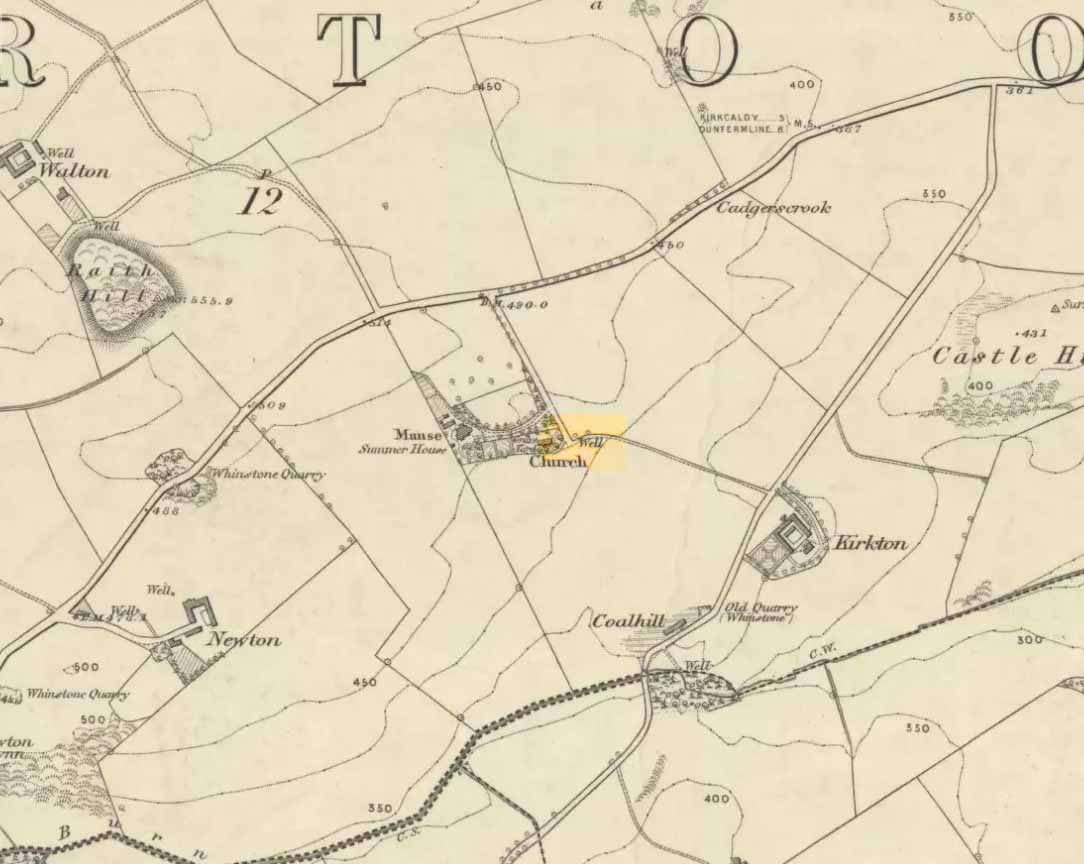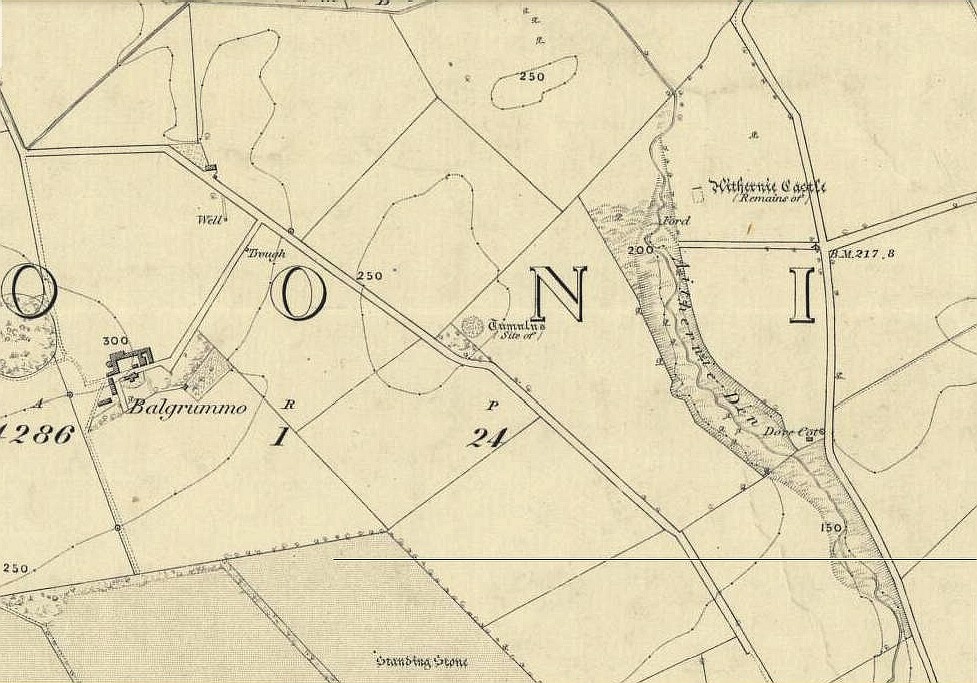Cup-and-Ring Stone: OS Grid Reference – NT 27131 91374
On the more south-side of Kirkcaldy, head for the roundabout at the meeting of the A910, B925 and B9157, heading out west along the Auchtertool road; but just 60-70 yards past the roundabout, take the first right along Raith Drive. Wibble along here for a few hundred yards until you reach Raith Gardens. Walk down here for 50 yards and cross onto to the grasses opposite where a path runs parallel with a large old stone wall. Barely 2 feet above ground level, keep yer eyes on the walling!
Archaeology & History
This is a peculiar one. A very peculiar one! Found embedded in some very old walling, it is similar in size, style and design to the curiously un-eroded multiple-ringed Binn-1 petroglyph 3.9 miles (6.2km) southwest, this concentric four-ringed ‘cup-and-ring’ stone actually seems to have no central cup. That aint too unusual. But the oddity here is its complete isolation—not merely from any other petroglyphs, but from any other neolithic or Bronze Age site.
The concentric rings are incomplete on the outer two rings, with openings or gateways to the inner two rings (a common element). Several parallel scars are clearly visible that have been cut across the surface of the stone, affecting the clarity of the carving. Whether these scars are geophysical, or were caused when the carving was moved and fit into the wall, we do not know.
The stone may or may not have been a portable one, typical of those attached to cairns or tomb-covers; or it may have been broken from a large piece of rock. We just don’t know. The design is typical of those found in relation to prehistoric tombs, yet none are known to have been here. In 1872 The Antiquary Journal covered the story of four stone coffins being found when the first Co-op building was being built in Kirkcaldy, on top of which was “an earthen urn” – but where was that exactly? Did the carving come from there? We do know that the walling in which the carving has been fixed was once part of an old Abbot’s Hall – but whatever was here before that, history seems to have forgotten.
A fascinating little mystery this one…..
Acknowledgements: Huge thanks to Penny Sinclair for showing us to this little-known site. Cheers Pen. 🙂
© Paul Bennett, The Northern Antiquarian



